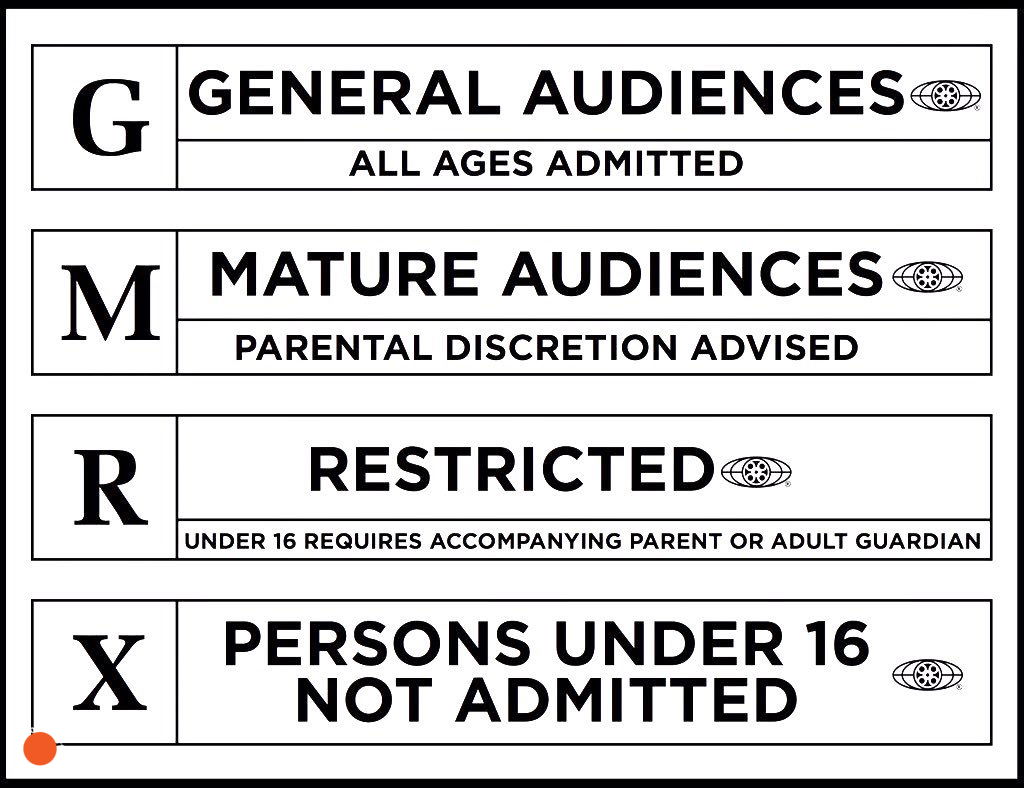On November 1, 1968, the American film industry underwent a transformative shift with the birth of the Motion Picture Association of America (MPAA) movie rating system. This voluntary rating system, developed by the MPAA in collaboration with the National Association of Theatre Owners (NATO) and the International Film Importers & Distributors of America (IFIDA), became a crucial tool for informing audiences about film content, ultimately reshaping American cinema. Before this, films were subject to inconsistent censorship rules, which often led to controversial cuts or bans. The MPAA’s ratings aimed to provide standardized guidelines while preserving filmmakers’ artistic freedom.
The first films rated under this system were met with curiosity, as the American public adjusted to a new way of consuming movies. Notably, Warner Bros.-Seven Arts’ The Girl on a Motorcycle became the first film to receive an X rating, marking a shift in how explicit content was identified. This article explores the origins of these ratings, their meanings, and their impact on the movie industry.
The Original MPAA Ratings (1968-1970)
Rated G: Suggested for General Audiences
The “G” rating was designed to denote films suitable for all ages, indicating content free from adult themes, language, or violence. This rating was seen as the safest choice for family viewing, offering movies that parents could comfortably take their children to see without concerns over mature content. G-rated films emphasized innocence and universally enjoyable themes, often appealing to younger audiences and family-friendly stories.
Example: The Love Bug (1968) was one of the early G-rated films, telling the story of a sentient Volkswagen Beetle with a sense of humor. The movie’s playful and heartwarming nature made it ideal for families, ensuring no uncomfortable moments or questionable content.
Rated M: Suggested for Mature Audiences – Parental Discretion Advised
The “M” rating, which initially stood for “Mature Audiences,” was slightly ambiguous but effectively functioned as a warning. It suggested that the film contained themes or elements that may not be suitable for children. However, there was no strict age restriction, meaning children could attend an M-rated film without adult supervision. The M rating often encompassed movies with deeper or darker themes that required a level of maturity to understand fully. Eventually, due to confusion around the rating, it was replaced by “PG” (Parental Guidance) in 1970.
Example: Rosemary’s Baby (1968), a film about a young woman whose pregnancy takes a dark and supernatural turn, exemplified the M rating. Although not explicitly graphic, the disturbing themes and horror elements made it a film better suited to mature audiences.
Rated R: Restricted – Persons Under 16 Not Admitted Unless Accompanied by Parent or Adult Guardian
The “R” rating was designed to signal that a movie contained significant adult content, such as violence, strong language, or explicit themes, and should not be viewed by children unaccompanied. Children under 16 were only permitted entry with a parent or adult guardian. This rating gave filmmakers greater freedom to include mature content while ensuring that parents had a say in whether their children were exposed to such material.
Example: The Graduate (1967) received an R rating for its exploration of a young man’s affair with an older woman, dealing with themes of sexuality and the complexities of adulthood. Although the film is less explicit by modern standards, it was considered risqué at the time and warranted an R rating.
Rated X: Persons Under 16 Not Admitted
The “X” rating was created to signify films that contained extreme adult content, typically of a sexual or graphic nature. Films with an X rating were barred from being shown to audiences under 16, a restriction meant to keep minors from explicit material. However, the X rating quickly took on an unintended association with adult films, as many pornographic movies began using it to signify their content. This led to some artistic films with adult themes being stigmatized or avoided by theaters, as the X rating became synonymous with pornography in public perception.
Example: The Girl on a Motorcycle (1968), the first film to receive an X rating, told the story of a young woman who travels across Europe to visit her lover, featuring scenes of nudity and explicit themes that were unprecedented at the time. Though it was an art film, its X rating limited its reach and influenced its public perception.
The Impact of the MPAA Rating System on Cinema
The MPAA rating system brought consistency and clarity to film content classification, serving as a guide for audiences and providing filmmakers with more flexibility. This system helped parents decide what films were suitable for their children while allowing adults to explore more mature themes without strict censorship. The ratings enabled filmmakers to push boundaries and create stories that were challenging, complex, and often controversial.
However, the MPAA ratings system also came under scrutiny, with critics arguing that it lacked transparency and sometimes favored major studios over independent filmmakers. For example, the X rating, while initially intended for films with adult themes, soon became an unofficial label for pornographic content. This unintended association pressured mainstream films to avoid the X rating, leading to the introduction of the NC-17 rating in 1990 to distinguish artistic adult content from pornography.
As the ratings evolved, they continued to adapt to the cultural changes in society. The “M” rating was replaced by “PG,” and later the “PG-13” category was introduced to bridge the gap between PG and R ratings, particularly as films like Indiana Jones and the Temple of Doom (1984) raised concerns about intense content within PG-rated films. Today, the rating system remains a critical part of how films are marketed, exhibited, and understood by audiences.
Also Read: Top 10 Spooky Movies to Watch This Halloween Night












